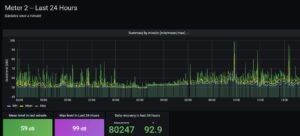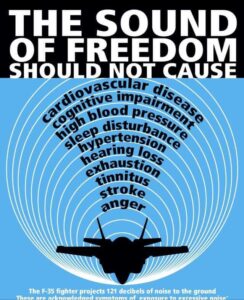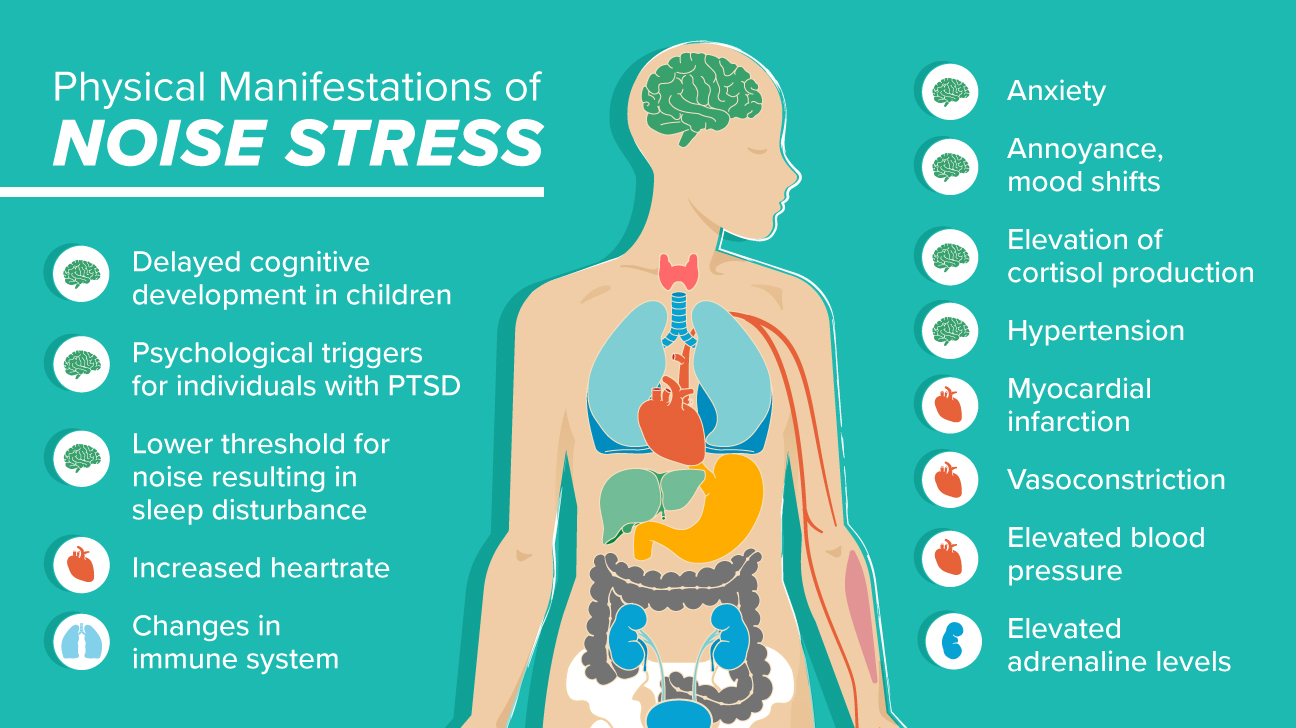Madison unlikely to ban future housing in area to be affected by F-35 jet noise
-
17 December 2021 WI State Journal
Noise levels with F-16’s, the level is projected to be up to four times louder with the addition of f-35’s

“Despite concerns about noise, Madison appears unlikely to prohibit future housing in an area that could be affected by sound from F-35 fighter jets coming to Truax Field.
The unlikelihood of a ban is reviving a stalled proposal to build housing on 63.6 acres of farmland on the North Side, part of which could be subject to unhealthy levels of jet noise.
The City Council President’s Work Group on Environmental Justice has been exploring possible alternatives, including a development moratorium, a special district with requirements and regulations for housing or zoning changes, in an effort to protect residents in new projects from noise and avoid having poor and minority people bear a disproportionate share of the environmental impacts from the F-35s, slated to begin operations in 2023.
But last month, after hearing about legal obstacles from the city attorney’s office, the work group clarified that none of its members wish to prohibit new housing in the area around the airport subject to noise levels of 65 decibels or more, which is considered too loud for residential development without significant soundproofing. The work group hasn’t produced a formal report or recommendations.
Instead, members said it’s best to ask developers to include soundproofing in new housing in the area and noted that the city could require noise mitigation for housing projects that seek city financial assistance. The group also suggested asking the federal Department of Housing and Urban Development to consider mitigation criteria in new housing or rehabilitation projects.
“The work group is asking developers to do mitigation,” said council President Syed Abbas, who appointed the group but is not a member. The work group could still make recommendations next year and any council member can always offer legislation that goes further.
After the work group’s discussion, Green Street Development Group resubmitted a previously failed proposal for 96 single-family homes, several multifamily buildings and other development on the vacant 63.6 acres, called Raemisch Farm, between North Sherman and Packers avenues.
In late July, the Plan Commission recommended approval of proposals for a preliminary plat and zoning changes from Green Street, finding the proposals consistent with the city’s Comprehensive Plan.
But in August, the City Council rejected the plan on a 15-2 vote, largely to give the president’s work group time to consider concerns about future noise from the F-35s. The refusal came despite Green Street’s commitment to not build homes in the eastern portion of the property, projected to experience an average daily noise of 65 decibels or more. The council, however, refused the requests in a way that they could be reintroduced.
“The council’s decision essentially halted all potential residential development and redevelopment projects near the airport,” said Bill Connors, executive director of Smart Growth Greater Madison. “When the President’s Work Group on Environmental Justice wisely decided not to recommend any sort of ban or new limitation on residential development near the airport, it partially lifted the uncertainty.”
Green Street’s resubmitted plans call for 96 single-family homes on 29.1 acres; multifamily housing on 12.3 acres; townhomes on 3.9 acres; commercial uses on 5.3 acres along Packers Avenue; a private park on 1.5 acres; public wetlands on 8.1 acres, and a forest preserve dedicated for parks or a school on 3.3 acres.
“We are excited to re-engage with the city on our current proposal that is compliant with the council’s recommendations and will include new market rate and workforce housing units, single-family homes, and retains over 10 acres of open green space with commercial uses to occupy the areas that have potential noise impact,” managing director Joel Oliver said.
Approvals will allow Green Street to move ahead with single-family homes as a matter of right and offer plans for other uses that would require Plan Commission approval, officials said.
“(But) until the City Council votes on something essentially declaring that we are back to business as usual for residential development near the airport, any residential development project near the airport that requires rezoning is very risky,” Connors said.
Ald. Charles Myadze, whose 18th District includes the Raemisch property, has scheduled an online neighborhood meeting for Jan. 11. He declined comment until after he gets community input at the meeting.
“Madison needs more housing construction,” Connors said. “Madison’s current and future residents can ill afford having the city government discourage residential development near the airport or in any other large part of the city.”
Madison Maps Connected to Noise
Safe Skies Clean Water Wisconsin Noise Page



